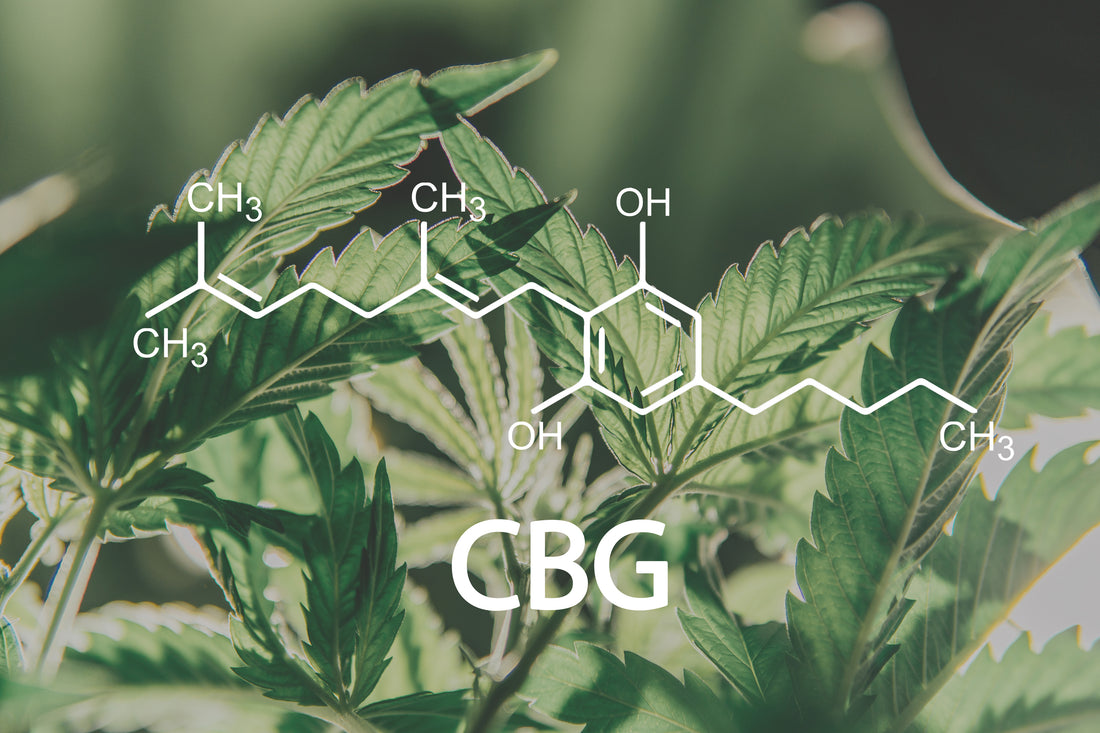
What is CBG?
In the ever-evolving world of cannabinoids, CBG, or cannabigerol, is emerging as a fascinating and powerful compound. Often overshadowed by its more famous counterparts, CBG is sometimes referred to as the "mother of all cannabinoids" because it plays a crucial role in the creation of other well-known cannabinoids, such as CBD and CBC. Although it’s less prevalent in cannabis plants, CBG is gaining recognition for its unique properties and potential benefits. In this guide, we’ll dive into what makes CBG special, how it works, and why it’s becoming a topic of interest among researchers and wellness enthusiasts alike.
The Origin of CBG: The Building Block of Cannabinoids
CBG is a minor cannabinoid found in the cannabis plant, but its role is anything but minor. During the early stages of the plant's growth, CBG exists in its acidic form as cannabigerolic acid (CBGA). CBGA is the precursor from which all other cannabinoids are synthesized. As the plant matures, enzymes break down CBGA into various other cannabinoid acids, including those that eventually become CBD and CBC. This transformation is why CBG is often dubbed the "mother" or "stem cell" of cannabinoids.
Because most CBG is converted into other cannabinoids as the plant grows, only small amounts of CBG remain in fully developed cannabis plants. This rarity has historically made CBG less accessible and more expensive to produce. However, with growing interest in its unique benefits, cultivators are developing new methods to increase CBG content in cannabis strains, making it more widely available.
How CBG Interacts with the Body
Like other cannabinoids, CBG interacts with the body’s endocannabinoid system (ECS), a network of receptors that help regulate various bodily functions, including mood, appetite, and immune response. The ECS plays a vital role in maintaining homeostasis, or balance, within the body.
CBG has been found to interact with both the CB1 and CB2 receptors in the ECS. While research is still in its early stages, these interactions suggest that CBG could have a wide range of effects on the body. What sets CBG apart from other cannabinoids is its potential ability to interact with a broader array of receptors beyond the ECS, including those involved in pain, inflammation, and even skin health.
Why CBG is Gaining Attention
CBG’s rise in popularity is driven by its unique properties that differentiate it from other cannabinoids. While much of the research is still ongoing, early studies and anecdotal evidence point to several potential areas where CBG might be particularly beneficial:
-
Potential Support for Skin Health
- CBG is being explored for its potential to support skin health. Its interaction with certain receptors in the skin could make it a useful ingredient in skincare formulations aimed at soothing and protecting the skin.
-
Appetite Regulation
- Unlike some cannabinoids that may suppress appetite, early research suggests that CBG could help stimulate appetite. This could make it an interesting compound for those looking to manage their eating habits more effectively.
-
Promoting a Balanced Mood
- CBG’s interaction with the ECS and other receptors involved in mood regulation suggests it might help promote a sense of calm and balance. This is particularly intriguing for those seeking natural ways to support mental well-being.
-
Supporting Eye Health
- There is growing interest in CBG's potential role in supporting eye health. Some studies have focused on how CBG interacts with specific receptors in the eyes, opening up possibilities for further research in this area.
CBG vs. Other Cannabinoids: What Makes It Unique?
While CBG shares some similarities with other cannabinoids, it also has distinct features that set it apart:
-
The "Mother" Cannabinoid
- As the precursor to other cannabinoids, CBG is essential in the biosynthesis of CBD, CBC, and others. Without CBG, these other compounds wouldn’t exist, underscoring its fundamental role in the cannabis plant.
-
Low Natural Concentration
- In most cannabis plants, CBG is present in much smaller quantities than CBD or other cannabinoids. This low concentration has made it a rare and valuable cannabinoid, leading to increased efforts to cultivate strains with higher CBG levels.
-
Broader Receptor Interaction
- While many cannabinoids primarily interact with the ECS, CBG is believed to influence a wider range of receptors in the body. This broad interaction could explain the diverse effects attributed to CBG, from skin health to mood regulation.
The Future of CBG
As research into cannabinoids continues to grow, CBG is poised to become an important part of the conversation. Its unique properties and potential applications make it a promising area of study, and we can expect to see more interest in CBG from both the scientific community and consumers.
In the coming years, advancements in cultivation techniques may lead to more widespread availability of CBG, making it easier for people to explore its benefits. Additionally, as more studies are conducted, we will gain a clearer understanding of how CBG works and how it can be best utilized in wellness products.
Conclusion
CBG is a fascinating cannabinoid with a unique role in the cannabis plant and a promising future in the world of natural health. While it may not yet be as well-known as CBD, its potential benefits are becoming increasingly recognized. Whether you’re intrigued by its role in skin health, its potential to support a balanced mood, or its foundational place in cannabinoid biosynthesis, CBG is a compound worth keeping an eye on. As research progresses and more products become available, CBG may well become a staple in the wellness routines of those seeking the natural benefits of cannabinoids.
